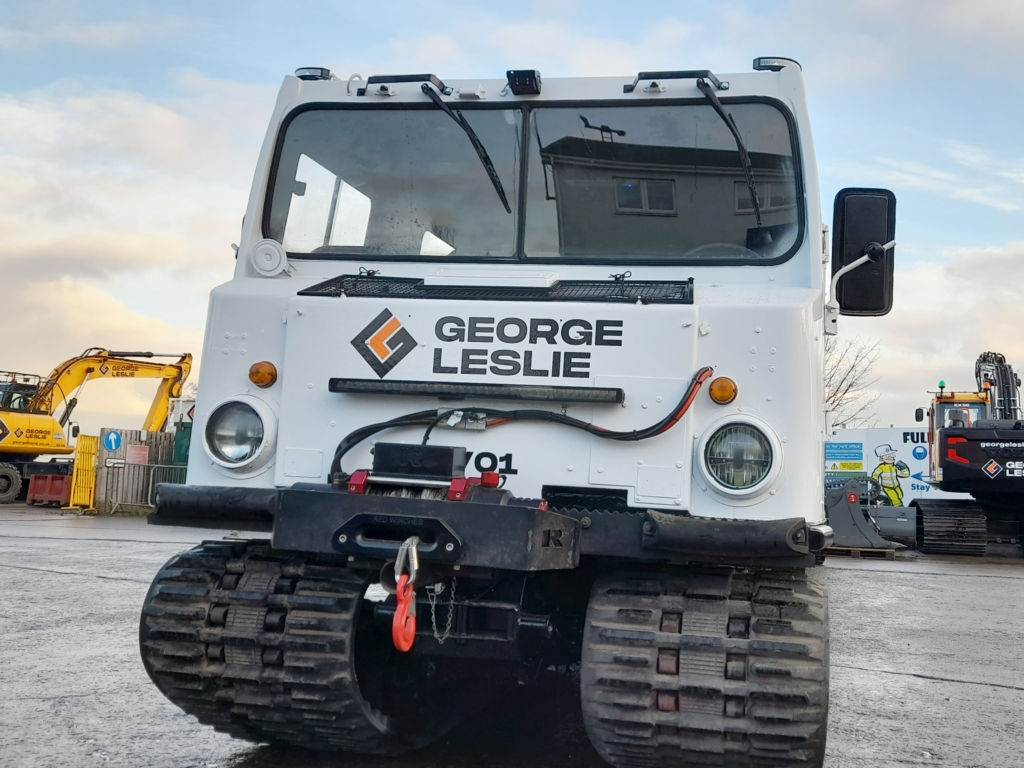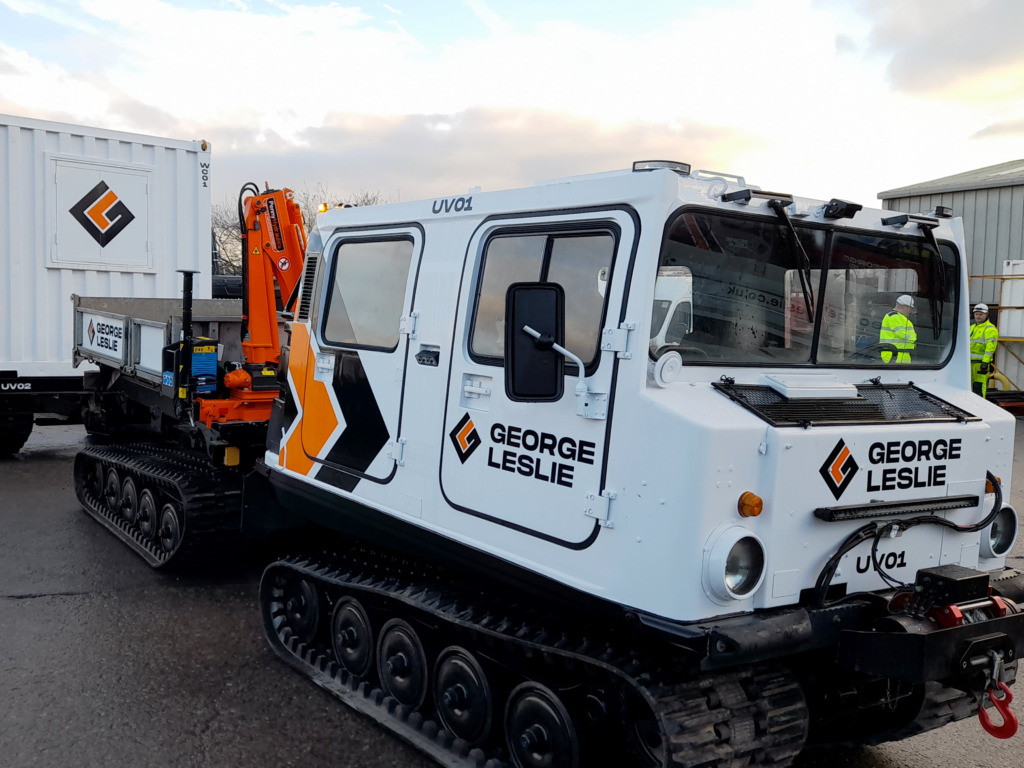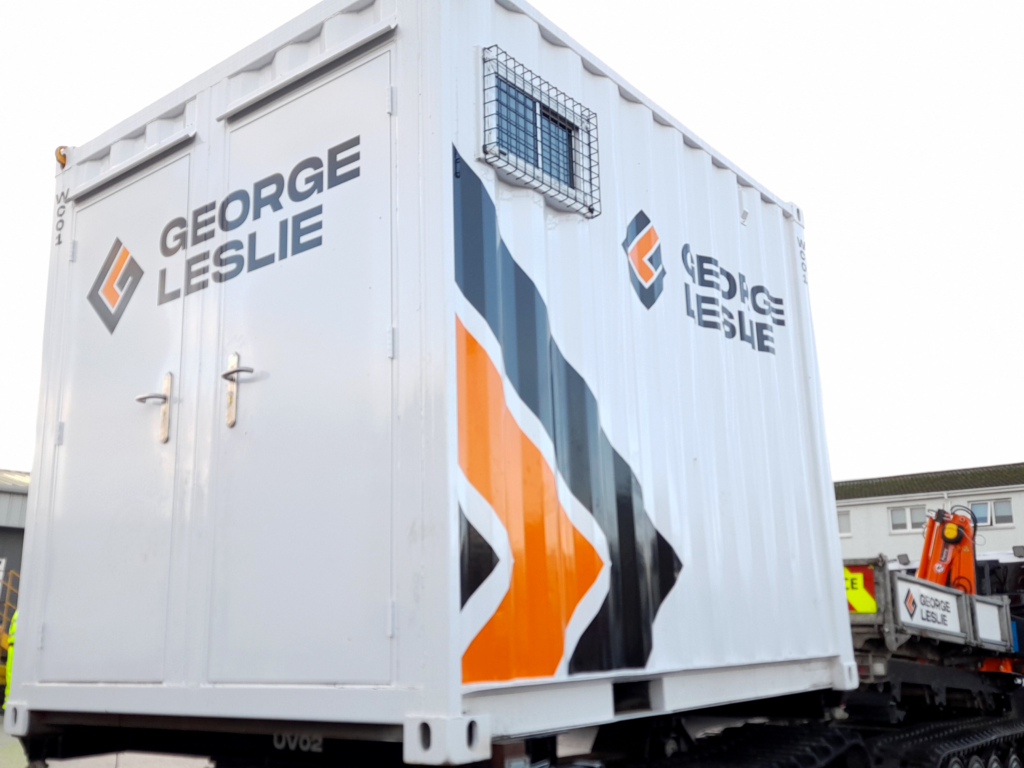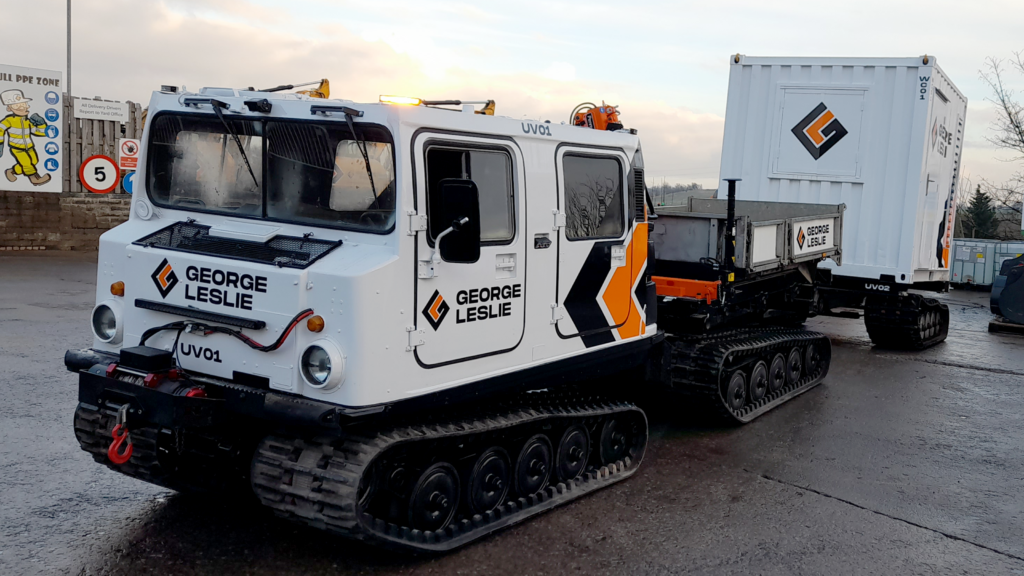It has been described as the most versatile vehicle on Earth and George Leslie have acquired one of Sweden’s most recognisable military vehicles for their own use.
The Hagglunds BV206 all-terrain vehicles are used in forestry, transmission line work, pipeline construction and maintenance, construction work on remote sites, forest firefighting, rescue and relief work, ambulance duty, crew transport and tourism.
The Hagglunds BV206 was designed to military specifications, developed during eight years of hard testing. The unique design, featuring articulated steering and drive on all four tracks, is ideal for negotiating difficult countryside and snow. The servo-assisted steering gear, the link between the front and rear units, allows flexibility and tight turns. The turning radius is less than eight meters (27 ft), even when fully loaded.
The Welfare Unit was customised for George Leslie and has been constructed to house four people and it can be towed by the BV206 or a dumper and is fully self-dependent with its own generator.
The Hagglunds load capacity is over two tons: 600 kg or six passengers and driver in the front unit, and 1400 kg or eleven passengers in the rear unit. Up to 200 kg of equipment can be carried on the roof of the rear unit.

Why do we need the BV206?
George Leslie have been commissioned by Scottish Water to carry out a peat depth and peat condition assessment within the catchment of Daer Water Treatment Works in the hopes of restoring the peatland area.
Restoration is going to begin in those areas found within Scottish Water owned land and the potential for restoration focuses on the areas within the land parcel found to the east and southeast of the Daer Reservoir.
The baseline conditions prove a site-wide potential for peatland restoration and protection. Areas of damaged peatlands were found during surveys that were practical for restoration either through ditch blocking and/or through hagg/gully reprofiling.
Eligibility is related to restoration of either blanket or raised bog with an associated baseline condition category of ‘Actively Eroding’ or ‘Drained’ and a minimum peat depth of 0.5 m.
Peatlands are a key part of the Scottish landscape, as well as our cultural and natural heritage. They are an internationally important habitat and a hugely important carbon store. Scotland’s peat soils cover more than 20% of the country and store around 1600 million tonnes of carbon.
However, it is estimated that over 80% of our peatlands are degraded.
Peatlands in good condition actively form peat, removing CO2 from the atmosphere and storing carbon in the soil.
Conversely, degraded peatlands may emit more CO2 than they remove and become a net source of greenhouse gases (GHG). If we lost all the carbon stored in our peat soils as CO2, it would be the equivalent of more than 120 times our annual GHG emissions.
Peatland restoration is therefore encouraged to help remove GHG from the atmosphere and combat climate change. The Scottish Government’s climate change plan 2018-2032 update aims to restore at least 250,000 hectares of degraded peatland by 2030.
Peatland restoration has many other benefits including supplying an internationally important habitat, improving water quality and reducing flood risk.
To restore the peatland, George Leslie will need to re-establish the environmental conditions required for peat to form.



